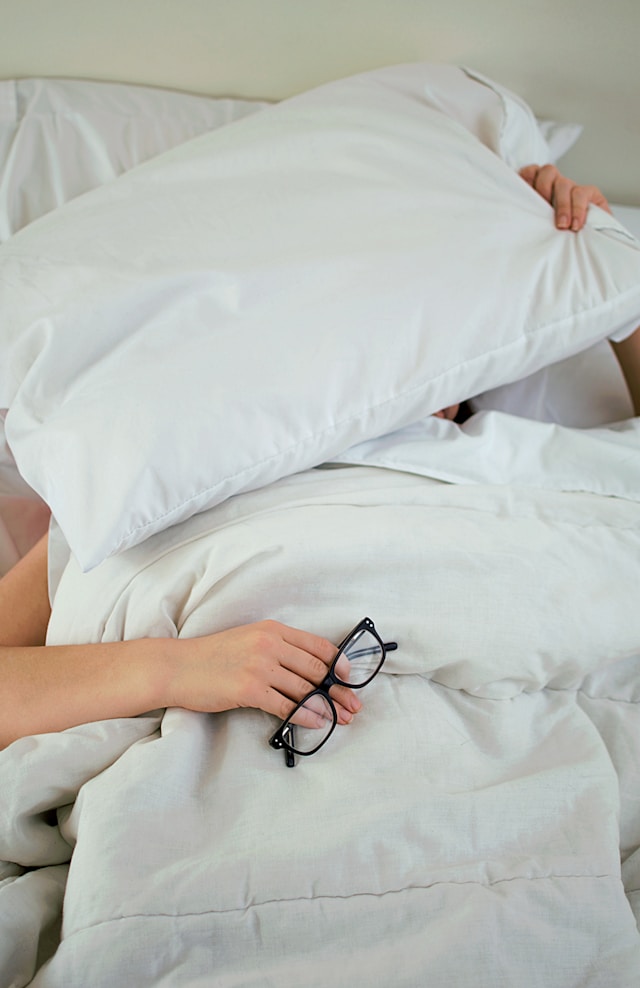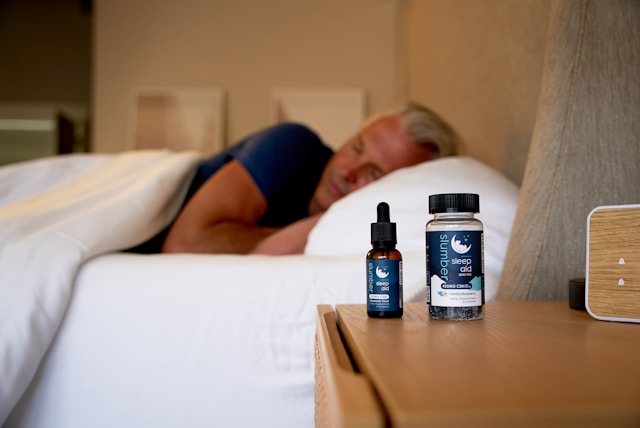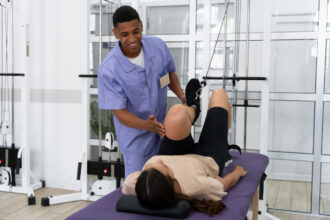Sleep represents the most powerful yet underutilized recovery tool available to athletes, physical therapy patients, and fitness enthusiasts seeking optimal results from their training efforts. In 2024, sports medicine professionals, physical therapists, and rehabilitation specialists increasingly recognize that quality sleep directly determines the success of recovery protocols, therapeutic interventions, and athletic performance outcomes. The sophisticated biological processes occurring during sleep orchestrate muscle repair, inflammatory response modulation, and neurological adaptations essential for physical improvement.
Recent research from leading sports medicine institutes reveals that individuals getting less than seven hours of quality sleep experience 60% slower muscle recovery rates and 45% reduced strength gains compared to those achieving eight to nine hours of restorative sleep. Professional sports teams now employ sleep specialists as integral members of their performance staff, while physical therapy clinics incorporate sleep assessment and optimization into comprehensive treatment plans. The medical community’s growing understanding of sleep’s anabolic properties has revolutionized approaches to injury rehabilitation, post-surgical recovery, and athletic training periodization.
The economic implications of sleep optimization for recovery are substantial, with professional athletes investing thousands of dollars in sleep technology, specialized mattresses, and environmental controls to maximize their competitive edge. Insurance companies increasingly cover sleep interventions as part of physical therapy and rehabilitation programs, recognizing that improved sleep quality accelerates recovery timelines and reduces overall treatment costs. Understanding the mechanisms through which sleep facilitates physical recovery empowers individuals to leverage this natural process for enhanced therapeutic outcomes and training adaptations.
The Science of Sleep and Muscle Recovery
Growth Hormone Release During Deep Sleep
The pulsatile secretion of growth hormone during slow-wave sleep represents the primary mechanism through which sleep facilitates muscle repair and growth. Approximately 70% of daily growth hormone release occurs during the first three to four hours of nighttime sleep, with the largest pulse typically occurring 60 to 90 minutes after sleep onset. This hormone stimulates protein synthesis, enhances amino acid uptake by muscle cells, and promotes the utilization of fat for energy, creating an optimal internal environment for tissue repair and muscle development.
Growth hormone works synergistically with insulin-like growth factor 1 to activate muscle satellite cells, the stem cells responsible for muscle regeneration following damage from exercise or injury. These activated satellite cells proliferate and differentiate into new muscle fibers, replacing damaged tissue and contributing to muscle hypertrophy. Sleep deprivation dramatically suppresses growth hormone secretion, with studies showing that individuals restricted to four hours of sleep experience 70% reduction in growth hormone release compared to those getting eight hours.
The amplitude and frequency of growth hormone pulses depend on sleep quality and architecture, with disrupted or fragmented sleep significantly impairing hormone release patterns. Factors including sleep apnea, restless leg syndrome, and environmental disturbances that cause frequent awakenings prevent the sustained deep sleep necessary for optimal growth hormone secretion. Athletes and rehabilitation patients who address sleep disorders and optimize sleep quality often report dramatic improvements in recovery speed and training adaptations.
Age-related declines in growth hormone secretion partially explain why older adults experience slower recovery from exercise and injury. However, research demonstrates that improving sleep quality through behavioral interventions, strategic napping, and sleep extension can partially restore growth hormone levels in aging populations. Physical therapists working with older clients increasingly emphasize sleep optimization as a critical component of successful rehabilitation programs.
Protein Synthesis and Muscle Repair Mechanisms
Sleep creates the ideal metabolic environment for muscle protein synthesis, the fundamental process through which damaged muscle fibers are repaired and strengthened. During sleep, decreased energy expenditure allows resources to be redirected toward anabolic processes, while reduced cortisol levels remove inhibitory effects on protein synthesis. The muscle protein synthesis rate increases by approximately 50% during sleep compared to waking rest, with peak rates occurring during REM sleep periods in the latter half of the night.
The mechanistic target of rapamycin pathway, which regulates muscle protein synthesis, shows enhanced activation during sleep, particularly when adequate protein intake occurs before bedtime. Consuming 20 to 40 grams of casein protein before sleep provides sustained amino acid availability throughout the night, maximizing muscle repair processes. Physical therapy patients who implement pre-sleep protein consumption protocols demonstrate faster strength recovery and reduced muscle soreness following therapeutic exercises.
Cellular autophagy, the process by which damaged proteins and cellular components are removed and recycled, accelerates during sleep, particularly during periods of deep slow-wave sleep. This cleanup process is essential for maintaining muscle cell health and function, preventing the accumulation of damaged proteins that impair muscle contraction and recovery. Sleep deprivation impairs autophagy, leading to accumulation of cellular debris that compromises muscle function and increases injury risk.
The circadian regulation of muscle protein metabolism creates optimal windows for recovery processes, with muscle insulin sensitivity and amino acid uptake capacity peaking during nighttime hours. This natural rhythm evolved to align recovery processes with periods of rest, making sleep timing as important as sleep duration for maximizing muscle repair. Shift workers and individuals with irregular sleep schedules often experience compromised recovery despite adequate total sleep time.
Testosterone Production and Anabolic Environment
Testosterone production follows a distinct circadian rhythm closely tied to sleep cycles, with levels rising throughout the night and peaking in the early morning hours. Men experience 60 to 70% of their daily testosterone release during REM sleep, while women show similar patterns of sleep-dependent sex hormone production. This nocturnal testosterone surge creates an anabolic environment conducive to muscle repair, bone remodeling, and strength development.
Sleep restriction rapidly suppresses testosterone production, with just one week of sleeping five hours per night reducing testosterone levels by 10 to 15% in healthy young men. This decline in testosterone not only impairs muscle recovery but also affects motivation, energy levels, and training intensity. Athletes who prioritize sleep consistently maintain higher testosterone levels and demonstrate superior strength gains compared to sleep-deprived counterparts.
The relationship between sleep and testosterone becomes particularly important for individuals undergoing physical therapy following injury or surgery. Adequate testosterone levels are essential for maintaining muscle mass during periods of reduced activity and facilitating strength recovery during rehabilitation. Physical therapists increasingly screen for sleep problems in patients showing slow progress, recognizing that poor sleep may be limiting hormonal support for recovery.
Female athletes and rehabilitation patients benefit from sleep’s effects on estrogen and progesterone balance, hormones that influence muscle recovery, bone health, and injury risk. Sleep disruption alters menstrual hormone patterns, potentially increasing injury susceptibility and compromising recovery capacity. Women in physical therapy programs who optimize sleep often report improved treatment outcomes and faster return to activity.
Sleep’s Anti-Inflammatory Effects
Cytokine Regulation During Sleep
Sleep profoundly influences the balance between pro-inflammatory and anti-inflammatory cytokines, molecular messengers that coordinate immune responses and tissue repair. During sleep, particularly during slow-wave sleep, the production of anti-inflammatory cytokines such as interleukin-10 increases while pro-inflammatory markers like tumor necrosis factor-alpha and interleukin-6 are suppressed. This shift toward an anti-inflammatory state facilitates tissue healing and reduces excessive inflammation that can impair recovery.
The timing of cytokine release follows circadian patterns that optimize recovery processes. Growth-promoting cytokines peak during early night sleep, supporting tissue repair and adaptation. Meanwhile, the suppression of inflammatory cytokines during sleep prevents the catabolic effects of chronic inflammation on muscle tissue. Athletes who maintain consistent sleep schedules show more favorable cytokine profiles and faster recovery from training-induced inflammation.
Sleep deprivation triggers a pro-inflammatory cascade, with even one night of poor sleep increasing inflammatory markers by 40 to 60%. This inflammatory response not only delays muscle recovery but also increases pain sensitivity, making physical therapy exercises more uncomfortable and potentially limiting treatment intensity. Chronic sleep restriction creates a state of systemic low-grade inflammation linked to increased injury risk and prolonged recovery times.
The bidirectional relationship between sleep and inflammation creates potential vicious cycles where pain and inflammation disrupt sleep, which in turn increases inflammation and delays healing. Physical therapists and athletic trainers must address both sleep quality and inflammatory status to break these cycles and optimize recovery outcomes. Interventions that improve sleep often produce rapid reductions in inflammatory markers and pain levels.
Oxidative Stress Management
Sleep serves as a critical period for managing oxidative stress generated during exercise and daily metabolic processes. During sleep, the production of antioxidant enzymes including superoxide dismutase and glutathione peroxidase increases, neutralizing free radicals that accumulate during waking hours. This nocturnal antioxidant surge protects muscle cells from oxidative damage and supports optimal cellular function.
The glymphatic system, the brain’s waste clearance mechanism, shows dramatically increased activity during sleep, removing metabolic waste products and inflammatory mediators from neural tissue. This process is particularly important for athletes and rehabilitation patients, as it clears substances that contribute to central fatigue and impaired motor control. Optimal glymphatic function requires adequate sleep duration and quality, with side sleeping position showing superior clearance rates.
Mitochondrial repair and biogenesis, essential for cellular energy production and recovery, accelerate during sleep. Sleep provides the metabolic conditions necessary for mitochondrial quality control processes, including the removal of damaged mitochondria and synthesis of new ones. Athletes with better sleep quality show superior mitochondrial function and oxidative capacity, translating to improved endurance and faster recovery between training sessions.
Heat shock proteins, molecular chaperones that protect cells from stress and facilitate protein repair, show increased production during sleep. These proteins play crucial roles in muscle adaptation to training stress and recovery from injury. Sleep deprivation impairs heat shock protein responses, compromising the cellular stress response systems necessary for training adaptation and injury recovery.
Immune System Optimization
Sleep profoundly influences immune system function, with adequate sleep strengthening immune responses while sleep deprivation increases infection susceptibility. During sleep, T-cell function improves, antibody production increases, and immune memory consolidation occurs. Athletes who maintain good sleep habits experience fewer upper respiratory tract infections and recover faster when infections occur.
The adaptive immune response to exercise stress depends heavily on sleep quality. Training creates micro-damage to muscle tissue that triggers immune-mediated repair processes. Adequate sleep ensures appropriate immune responses that facilitate adaptation without excessive inflammation. Sleep-deprived athletes often experience prolonged muscle soreness and delayed functional recovery following intense training.
Natural killer cell activity, important for combating infections and managing inflammatory responses, shows strong circadian regulation with peak activity during sleep. These cells help clear damaged tissue and regulate inflammatory processes during recovery. Physical therapy patients with better sleep quality demonstrate more efficient tissue remodeling and faster resolution of post-injury inflammation.
The relationship between sleep and immune function becomes particularly important during intensive training periods or rehabilitation programs. The combined stress of physical training and sleep deprivation can suppress immune function, increasing illness risk and compromising recovery. Periodized training programs increasingly incorporate planned recovery and sleep extension periods to maintain immune competence.
Neurological Recovery and Motor Learning
Motor Memory Consolidation
Sleep plays an indispensable role in consolidating motor memories acquired during physical therapy sessions or sports training. The process of transforming fragile motor memories into stable, long-term representations occurs primarily during sleep, with different sleep stages contributing unique consolidation functions. Non-REM sleep stabilizes motor memories and integrates them with existing motor programs, while REM sleep promotes creative problem-solving and refinement of complex movement patterns.
Research using brain imaging technology reveals that the same neural circuits activated during motor skill practice show reactivation during subsequent sleep, particularly during sleep spindles in stage 2 sleep. This offline rehearsal strengthens synaptic connections and optimizes neural efficiency for learned movements. Physical therapy patients who nap or sleep shortly after therapy sessions demonstrate superior retention of therapeutic exercises and functional improvements.
The timing between learning and sleep critically influences consolidation effectiveness. Motor skills practiced within four hours of sleep show superior retention compared to those learned earlier in the day. This finding has important implications for scheduling physical therapy sessions and training, suggesting that evening sessions may provide advantages for skill acquisition when followed by adequate sleep.
Sleep deprivation selectively impairs procedural memory consolidation, the type of memory responsible for motor skills and movement patterns. Athletes who sacrifice sleep for additional training may actually impair their skill development despite increased practice time. Similarly, physical therapy patients with poor sleep often struggle to maintain gains between sessions, requiring more frequent treatment to achieve therapeutic goals.
Neuromuscular Coordination Enhancement
Sleep facilitates the optimization of neuromuscular coordination through refinement of motor unit recruitment patterns and intermuscular coordination. During sleep, the nervous system processes sensory feedback from training and therapy, adjusting motor programs to improve efficiency and reduce unnecessary muscle activation. This neural fine-tuning results in smoother, more coordinated movements and reduced energy expenditure during physical activity.
Proprioceptive accuracy, the ability to sense body position and movement, improves following adequate sleep. This enhancement in body awareness is particularly important for injury prevention and rehabilitation, as proprioceptive deficits increase injury risk and impair functional recovery. Physical therapists report that patients with better sleep quality demonstrate faster improvements in balance and coordination exercises.
The synchronization between cortical and spinal motor circuits undergoes refinement during sleep, improving the timing and precision of muscle activation. This neural synchronization is essential for complex multi-joint movements required in sports and daily activities. Sleep-deprived individuals show decreased motor unit synchronization and increased movement variability, compromising performance and potentially increasing injury risk.
Reaction time and decision-making speed, crucial for athletic performance and injury avoidance, show significant sleep dependency. Even modest sleep restriction impairs reaction time equivalent to legal levels of alcohol intoxication. Athletes in reactive sports and patients working on fall prevention benefit particularly from sleep optimization to maintain quick protective responses.
Pain Processing and Perception
Sleep profoundly influences pain processing pathways, with adequate sleep reducing pain sensitivity while sleep deprivation amplifies pain perception. The descending pain modulation system, which inhibits pain signals from reaching consciousness, shows decreased activity with sleep loss. This increased pain sensitivity can limit physical therapy intensity and exercise tolerance, slowing recovery progress.
The relationship between sleep and pain creates important considerations for rehabilitation programs. Patients experiencing pain-related sleep disruption often require modified treatment approaches that address both pain and sleep simultaneously. Cognitive behavioral therapy for insomnia combined with physical therapy produces superior outcomes compared to physical therapy alone for chronic pain conditions.
Endogenous opioid production, the body’s natural pain relief system, increases during sleep, particularly during slow-wave sleep. This natural analgesia reduces reliance on pain medications and facilitates engagement in therapeutic exercises. Patients who improve their sleep quality often report decreased pain medication needs and improved therapy participation.
Central sensitization, where the nervous system becomes hypersensitive to pain signals, develops more readily in sleep-deprived individuals. This heightened pain sensitivity can transform acute injuries into chronic pain conditions. Addressing sleep problems early in the rehabilitation process may prevent the transition from acute to chronic pain states.
Optimizing Sleep for Maximum Recovery Benefits

Sleep Architecture and Recovery Phases
Understanding sleep architecture enables strategic optimization of different sleep stages for maximum recovery benefit. The typical sleep cycle progresses through light sleep, deep slow-wave sleep, and REM sleep in approximately 90-minute cycles, with deep sleep predominating in the first half of the night and REM sleep increasing toward morning. Each stage contributes unique recovery functions, making complete sleep cycles essential for comprehensive recovery.
Slow-wave sleep, comprising stages 3 and 4 of non-REM sleep, represents the most restorative phase for physical recovery. During this stage, growth hormone release peaks, muscle blood flow increases by 20 to 30%, and cellular repair processes accelerate. Athletes and rehabilitation patients should prioritize protecting the first four hours of sleep when slow-wave sleep predominates.
REM sleep, characterized by rapid eye movements and vivid dreams, plays crucial roles in emotional regulation, creativity, and complex motor skill consolidation. The temperature regulation impairment during REM sleep makes environmental temperature control important for maintaining sleep quality. Physical therapy patients working on complex functional movements benefit particularly from adequate REM sleep.
Sleep stage distribution changes with training status and recovery needs, with the body naturally increasing slow-wave sleep following intense physical stress. This adaptive response can be supported through proper sleep timing and duration. Wearable sleep tracking technology now allows individuals to monitor their sleep architecture and adjust behaviors to optimize recovery-promoting sleep stages.
Pre-Sleep Routines for Enhanced Recovery
Establishing effective pre-sleep routines significantly improves sleep quality and recovery outcomes. The two-hour period before bedtime represents a critical window for preparing the body and mind for restorative sleep. Successful routines address physical, mental, and environmental factors that influence sleep onset and quality.
Progressive muscle relaxation combined with static stretching creates ideal conditions for sleep while addressing muscle tension from training or therapy. Holding gentle stretches for 30 to 60 seconds activates the parasympathetic nervous system, promoting relaxation. Focus on major muscle groups used during the day’s activities, paying particular attention to areas of tightness or discomfort.
Nutrition timing and composition before sleep influences recovery processes throughout the night. Consuming 20 to 40 grams of casein protein 30 minutes before bed provides sustained amino acid availability for muscle repair. Adding tart cherry juice, a natural source of melatonin and anti-inflammatory compounds, may improve sleep quality and reduce muscle soreness. Avoid large meals within two hours of bedtime, as digestion can interfere with sleep quality.
Mental preparation through journaling, meditation, or breathing exercises helps transition from the stress of daily activities to the relaxation necessary for sleep. Writing tomorrow’s schedule and concerns before bed prevents rumination that delays sleep onset. Gratitude practices and positive visualization of recovery progress promote beneficial psychological states for healing.
Environmental Optimization for Recovery Sleep
The sleep environment profoundly impacts sleep quality and subsequent recovery processes. Temperature represents the most critical environmental factor, with optimal bedroom temperature between 60 and 67 degrees Fahrenheit facilitating the body temperature drop necessary for sleep initiation. Athletes generating significant metabolic heat may benefit from cooling mattress pads or moisture-wicking bedding.
Light exposure patterns regulate circadian rhythms and melatonin production essential for quality sleep. Complete darkness during sleep maximizes melatonin release and prevents sleep fragmentation. Blackout curtains, eye masks, and covering of electronic device lights create optimal darkness. Morning light exposure immediately upon waking helps maintain circadian alignment and improves subsequent night’s sleep.
Noise pollution represents a major sleep disruptor, with even sounds below conscious awareness causing autonomic arousal and sleep fragmentation. White noise machines or apps can mask disruptive environmental sounds while providing consistent auditory input. Earplugs offer simple solutions for noisy environments, though some individuals find them uncomfortable for extended use.
Mattress and pillow selection significantly impacts sleep quality and recovery, particularly for individuals with injuries or chronic pain. Medium-firm mattresses generally provide optimal spinal alignment while accommodating pressure points. Pillows should maintain neutral neck alignment based on preferred sleep position. Regular replacement of worn bedding ensures continued support and hygiene.
Clinical Applications in Physical Therapy and Training
Sleep Assessment in Rehabilitation Programs
Comprehensive sleep assessment has become standard practice in modern physical therapy and sports medicine settings. Initial evaluations now routinely include sleep questionnaires such as the Pittsburgh Sleep Quality Index and Epworth Sleepiness Scale to identify sleep problems that might impair recovery. These assessments help therapists understand whether poor progress stems from inadequate treatment or underlying sleep issues.
Objective sleep monitoring through actigraphy or consumer wearables provides valuable data about sleep patterns and their relationship to recovery markers. Therapists can correlate sleep metrics with pain levels, functional improvements, and treatment responses to identify optimal sleep targets for individual patients. This data-driven approach enables personalized sleep recommendations based on actual needs rather than general guidelines.
Sleep diaries completed by patients reveal patterns between daily activities, sleep quality, and recovery progress. Tracking bedtime, wake time, sleep quality, and next-day symptoms helps identify factors promoting or hindering recovery sleep. This self-monitoring increases patient awareness of sleep’s importance and engagement in sleep optimization efforts.
Screening for sleep disorders has become essential in rehabilitation settings, as conditions like sleep apnea affect 20 to 30% of adults and significantly impair recovery. Simple screening tools identify patients requiring referral to sleep specialists for comprehensive evaluation. Addressing underlying sleep disorders often produces dramatic improvements in therapy outcomes and quality of life.
Integrated Treatment Approaches
Modern rehabilitation programs integrate sleep optimization with traditional physical therapy interventions for synergistic benefits. Treatment plans now include sleep hygiene education, relaxation training, and specific recommendations for optimizing sleep during different recovery phases. This holistic approach recognizes that successful rehabilitation requires 24-hour recovery strategies, not just therapy session interventions.
Coordination between physical therapists, sleep specialists, and other healthcare providers ensures comprehensive care addressing all factors affecting recovery. Multidisciplinary teams share information about sleep status, pain levels, and functional progress to adjust treatment plans collaboratively. This integrated approach proves particularly effective for complex cases involving chronic pain, multiple injuries, or systemic conditions affecting recovery.
Technology integration enables remote monitoring of sleep and recovery metrics between therapy sessions. Mobile apps allow patients to track sleep, pain, and function while receiving personalized recommendations based on their data. Therapists can adjust home exercise programs based on sleep quality, prescribing lighter activities following poor sleep to prevent overload.
Insurance coverage for sleep interventions within physical therapy programs continues expanding as evidence demonstrates cost-effectiveness. Improved sleep quality reduces therapy duration, medication needs, and secondary complications, producing overall healthcare savings. Documentation of sleep-related interventions and outcomes strengthens justification for comprehensive rehabilitation approaches.
Conclusion: Maximizing Recovery Through Sleep Optimization
The profound influence of sleep on muscle repair, inflammation reduction, and gains from physical therapy or training establishes sleep optimization as a cornerstone of effective recovery strategies. The complex biological processes occurring during sleep, from growth hormone release to motor memory consolidation, cannot be replicated through any other intervention, making adequate quality sleep irreplaceable for optimal recovery outcomes.
Healthcare providers, coaches, and athletes increasingly recognize that training and therapy represent only stimuli for adaptation, while sleep provides the essential recovery period when actual improvements occur. This paradigm shift has led to comprehensive approaches that balance training stress with recovery capacity, recognizing that excessive training without adequate sleep produces diminishing or negative returns.
The individualized nature of sleep needs requires personalized assessment and intervention strategies rather than one-size-fits-all recommendations. Factors including age, training status, injury severity, and genetic variants influence optimal sleep duration and timing for recovery. Successful programs monitor individual responses and adjust sleep recommendations based on recovery markers and functional outcomes.
Future developments in sleep science and recovery medicine promise even more sophisticated approaches to optimizing sleep for rehabilitation and performance. Advances in sleep tracking technology, personalized medicine, and chronobiology will enable precise matching of sleep interventions to individual needs and recovery goals. The integration of artificial intelligence and machine learning may soon provide real-time sleep optimization recommendations based on comprehensive physiological monitoring.
The economic and performance advantages of prioritizing sleep for recovery continue driving adoption across sports, rehabilitation, and occupational settings. Organizations investing in sleep education and optimization programs report reduced injury rates, faster return-to-play times, and improved overall performance. As awareness of sleep’s critical role in recovery grows, sleep optimization will become standard practice rather than an advanced strategy, benefiting athletes, patients, and active individuals seeking to maximize their physical potential and recovery capacity.













